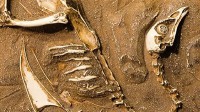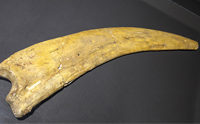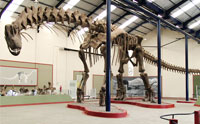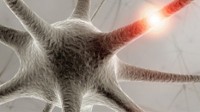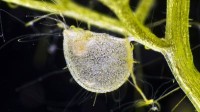By Yingguang Liu HIV-1 is an important example which shows genetic entropy operating throughout the biological realm, even while meaningful genetic adaptations are occurring. …read more Read more here: AIG Daily
By Dr. Alan Gillen Another example of design which can be seen in the microbial world is the production of a blood-red pigment made by Serratia marcescens. …read more Read more here: AIG Daily
Multiple coal beds are no surprise to creationists despite evolutionists’ objections. …read more Read more here: creation.com
By Dr. Matthew E. Ingle This paper aims to determine the number of created kinds in this family of parasites, the original hosts, and what produced current species. …read more Read more here: AIG Daily
By Dr. Elizabeth Mitchell Evolutionists have come to largely accept the fact that soft tissues can be preserved in fossils for an extraordinarily long time. But millions of years . . . ? …read more Read more here: AIG Daily
A further response to Reasonable Faith Adelaide. …read more Read more here: creation.com
News reports around the world tell of red-blood-cell-like and collagen-like structures found in 75 million year-old dinosaur bones long stored in the British Museum. This news coincides with the release of the film Jurassic World, in which fictional scientists resurrect dinosaurs using dino DNA that “iron chelators” somehow preserved for millions of years. Though the movie is fiction, it does refer to a real study involving blood and bone. However, a closer look at the relevant chemistry shows that the iron-as-preservative story may be just as fictional as Jurassic World. More… …read more Read more here: icr.org
By Yingguang Liu Mutational degeneration of the nef gene manifests as increased pathogenicity of HIV-1. …read more Read more here: AIG Daily
Evolutionists continue to question whether a global flood could have produced all coal deposits. …read more Read more here: creation.com
By Dr. Alan Gillen There are many extraordinary examples of design in the microbial world. In this chapter, two examples are given. …read more Read more here: AIG Daily
Crumbling seaside cliffs at Whitby in northern England continuously reveal new fossils. Most of them are remains of small plants and animals, but researchers from the University of Manchester described a much larger fossil: a giant vertebra from a sauropod’s tail. How long ago was the rare bone buried? More… …read more Read more here: icr.org
By Heather M. Brinson God has equipped every human with backup systems that are programmed to respond to all sorts of emergencies. …read more Read more here: AIG Daily
German scientists revealed that some Chinese dinosaur eggs probably looked similar to the dark blue-green hue of modern emu eggs. If the dinosaur’s original pigment molecules revealed the egg’s color, then a significant question emerges. Can pigments really stay colorful for 66 million years? More… …read more Read more here: icr.org
By Dr. Elizabeth Mitchell Single-celled organisms called Lokiarchaeota are making headlines as missing links in our supposed single-celled ancestry. …read more Read more here: AIG Daily
By Ron Dudek This marvel of miniature design is set by tiny plants, called bladderworts, which seek to supplement their diet. …read more Read more here: AIG Daily
By Ken Ham The media has been buzzing lately with headlines like “Origin-of-Life Story May Have Found Its Missing Link” and “Researchers May Have Solved ‘Missing Link’ Mystery in the Origin of Life.” The question of the origin of life has long been a puzzle to evolutionary scientists. After all, one of the laws of nature is the law of biogenesis; life only comes from other life. This law is confirmed no matter where we look on Earth and, despite years of research, life only ever comes from other life—it has never, not even once, been observed to come from [More]
When one looks at all the facts, the case for evolution and millions of years crumbles. …read more Read more here: creation.com
Stars have an amazing variety, and pose problems for evolutionary views of their origin. …read more Read more here: creation.com
By Dr. Andrew A. Snelling Over the last 80 years numerous determinations have been made of the 147Sm half-life. …read more Read more here: AIG Daily
After a volcanic eruption, a new landform emerges from the sea within days. …read more Read more here: creation.com
Researchers scramble for another explanation after finding-contrary to expectations-that varnish forms quickly on desert rocks. …read more Read more here: creation.com
By Dr. Elizabeth Mitchell Evolutionists welcome the new australopithecine jaws to the “hominin” family. But do we learn anything at all about human history from these fossils? …read more Read more here: AIG Daily
By Ken Ham Yet another recent discovery supports the history of God’s Word. Researchers working in a London museum have reportedly discovered what looks like red blood cells and collagen fibers in supposedly 75-million-year-old dinosaur fossils! Now, this isn’t the first time that soft tissue has been discovered in dinosaur fossils that are supposedly millions of years old. The first such discovery was made in 2005 and created quite the stir in academic circles—many couldn’t believe what they were reading! But, since then, they’ve discovered even more soft tissue. Although still a rare find, it’s not as unbelievable as once [More]
A landslide on the northern side of Mount St. Helens in Washington state on May 18, 1980 uncorked a violent volcanic eruption of ash, vapor, molten material and pulverized rock. The effects of this one of the most scrupulously documented volcanos in history have reshaped the way geologists think about certain landforms. More… …read more Read more here: icr.org
The answer (of course) is a resounding ‘No!’. So … how do you get an aardvark? …read more Read more here: creation.com
By Dr. Don DeYoung The orb weaver has a unique “stay away” warning system that has inspired new technology to save birds’ lives. …read more Read more here: AIG Daily
If theistic evolution is true, is God responsible for the universe? …read more Read more here: creation.com

























